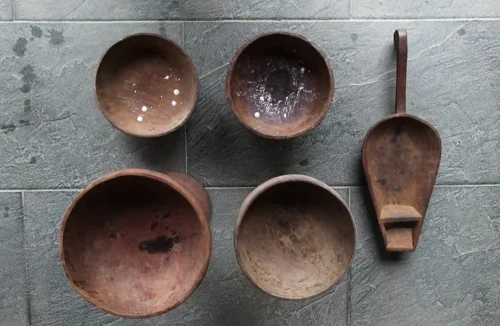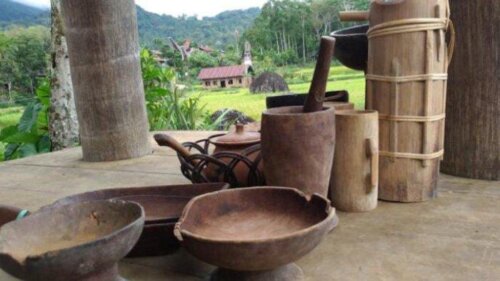Culture
Kandean Dulang as Identity
Kandean dulang is a traditional Toraja dinnerware. “Kandean” means plate, while dulang which comes from the word “dolong” means a place for side dishes and vegetables.
A long time ago, kandean dulang was made by each family according to the number of members, it was not made in large quantities and traded. This relates to the exclusive ownership of kandean dulang.
One kandean cannot be used by another person, even within the same family member. This is characterized by the height of the kandean dulang which varies according to the position of the family members. Plates with high legs are called kandean langka’, plates with low legs are called kandean resso’, while plates with the lowest height are called dikanukui. Apart from having different heights, kandean also has a shape with holder stems, called kandean ditoeanni. The different shapes symbolize the social strata in Toraja culture.
In the Aluk Todolo belief (traditional Toraja life teachings), people who die simply move from nature to the world of spirits. This means that death is not an essential change in the course of human life. This understanding affects the kandean tray that is included in the grave, because the spirit is thought to still use it.

The social status attached to living people remains attached when they die, including the kandean dulang which represents that status. This illustrates the importance of kandean dulang, both in daily life and in sacred activities.
The geometric shape of the kandean tray combined with a handle (handle) is a form of Toraja artistic expression, which we can also find in a lyric in the song “Dolong-Dolong”.
Dolong-dolong pa’saran kayu,
dipanglo’doi utan battae’.
Utan battae’ mammi dikande,
Dipasitollo lada katokkon”
The dolong-dolong song is an expression of Toraja people’s joy when cooking. This song is usually sung by a mother or children while holding dolong (containers for vegetables, side dishes and chili sauce) when in the kitchen. Dolong is part of the kandean dulang which complements traditional Toraja eating utensils.
This means that the completeness of the kandean dulang consists of a plate, a container for vegetables and side dishes, a container for chili sauce, and a tool for pounding the chili sauce.
The use of kandean dulang in its time was considered highly efficient, as the wooden kandean dulang did not easily break or crack. Although Torajans generally use plastic or glass plates for their daily needs, kandean dulang can still be found in some homes, especially in villages with traditional lifestyles. Only a few are still used as kitchen or dining utensils, others are kept as inheritances from parents or grandparents. This illustrates that kandean dulang has a bond with its users, not just its function as eating ware.


